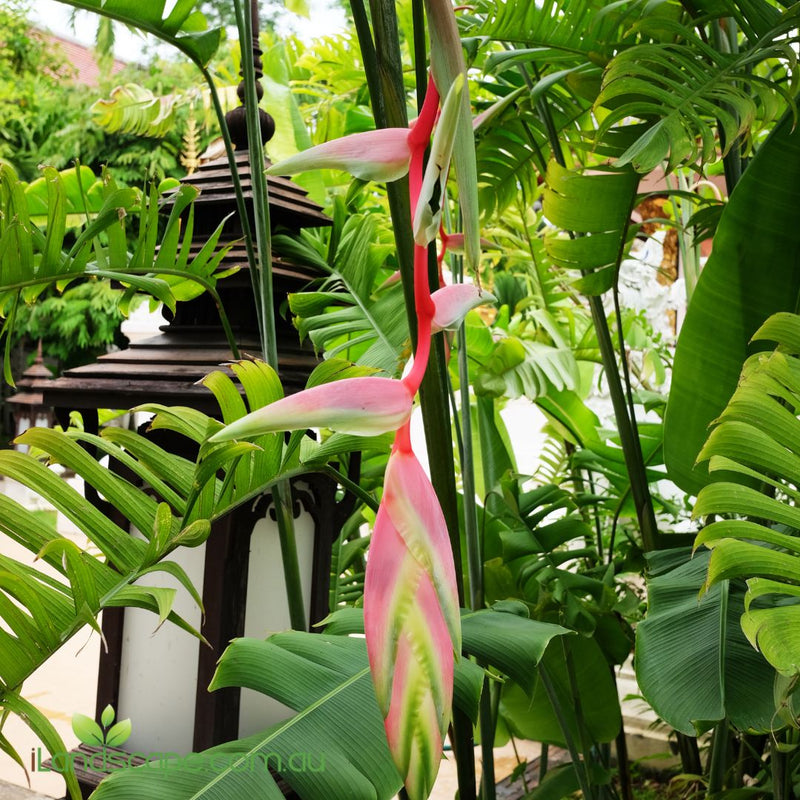Pieris Temple Bells
Pieris Temple Bells, a stunning evergreen shrub renowned for its graceful, bell-shaped flowers and glossy foliage. Ideal for adding year-round interest to any landscape, Pieris Temple Bells thrives in partial shade and well-drained soil. With its compact growth habit and vibrant foliage that emerges bronzy-red before maturing to deep green, this versatile plant makes a striking focal point in borders, containers, or woodland gardens.
Description: Pieris japonica 'Temple Bells', commonly known as Temple Bells Pieris, is an evergreen shrub admired for its cascading clusters of bell-shaped flowers and attractive foliage. This plant is valued for its year-round interest, including its vibrant new growth and elegant blooms.
Flowers:
Blooms: Produces abundant clusters of small, bell-shaped white flowers that hang in graceful, drooping racemes. The flowers appear in early to mid-spring.
Fragrance: The flowers have a subtle, pleasant fragrance that enhances the garden ambiance.
Foliage:
Leaves: New growth emerges in shades of red or bronze, gradually maturing to glossy dark green. The leaves are lance-shaped, providing a beautiful contrast to the white flowers.
Seasonal Color: The vibrant new growth and evergreen foliage provide year-round interest.
Form and Size:
Size: Typically grows 1-2 meters tall and wide, forming a rounded, bushy habit.
Habit: Upright and compact, with a dense growth habit that makes it suitable for small gardens and containers.
Growing Conditions:
Climate: Thrives in temperate climates, suitable for many regions in Australia. Prefers cool, moist conditions and protection from harsh afternoon sun.
Soil: Prefers acidic, well-draining soil enriched with organic matter. Mulching helps retain moisture and regulate soil temperature.
Sunlight: Best grown in partial shade. Full sun can be tolerated if the soil is kept consistently moist and if the plant is protected from the hottest part of the day.
Watering: Regular watering is essential, especially during dry periods. Keep the soil consistently moist but not waterlogged.
Uses:
Borders and Edges: Ideal for planting along borders and edges, where its compact size and attractive flowers can be showcased.
Specimen Plant: Can be used as a standalone specimen plant in gardens and courtyards, where its elegant blooms and vibrant foliage can be admired.
Containers: Suitable for growing in large containers or pots, making it a versatile option for patios and balconies.
Woodland Gardens: Perfect for woodland garden settings, where it can thrive in the dappled shade of larger trees.
Maintenance:
Pruning: Minimal pruning is required. Remove spent flower clusters and dead or damaged branches after flowering to maintain a tidy appearance. Light shaping can be done in early spring.
Fertilizing: Apply an acid-loving plant fertilizer in early spring to promote healthy growth and flowering. Avoid fertilizers with high nitrogen content, which can encourage excessive foliage growth at the expense of flowers.
Pests and Diseases: Generally resistant to pests and diseases. Monitor for lacebugs, scale insects, and fungal diseases, especially in humid conditions.
Notes:
Hardiness: Hardy in USDA zones 5-8. In cooler regions of Australia, provide protection from severe frost to prevent damage to young shoots and flower buds.
Companion Plants: Pair with other acid-loving plants such as rhododendrons, azaleas, and camellias to create a cohesive and vibrant garden display.
Pieris japonica 'Temple Bells' (Temple Bells Pieris)
Common Name: Temple Bells Pieris, Japanese Andromeda
Botanical Name: Pieris japonica 'Temple Bells'
Family: Ericaceae
Origin: Native to Japan, Taiwan, and eastern China
